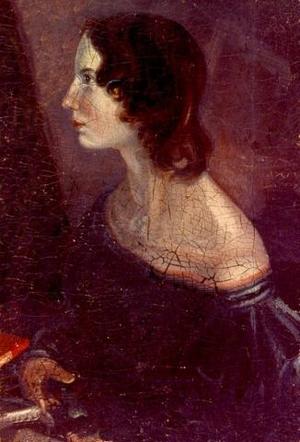The birth of the wildly popular and incredibly successful genre known as the Gothic Novel is most often traced back to 1765 and the publication of Horace Walpole’s The Castle of Otranto. This novel hasn’t had quite the staying power with audiences that other Gothic masterpieces ranging from Wuthering Heights to Dracula have had, but it typically remains required reading on college campuses across the English-speaking world. Readers of the time were much like those who spend all day on You Tube or iFilm, however; the novel today may not seem like much, but neither will most of those videos currently airing on the web in another hundred years. (Or another ten years, for that matter.)
The Gothic novel typically engages in a specific set of conventions in order to explore the subconcious archetypal fears; since many of these fears involved elements associated with both sexuality and violence the familiar trappings of the gothic story was an absolute necessity. Necessary in order to cover up the subtext of what the stories were really concerned with. These gothic conventions-most of which were originated in Walpole’s The Castle of Otranto, include things like castles or large mansions, often decaying in order to portray the decay of humanity; rough, sometimes dangerous landscapes such as jagged cliffs or foggy moors, the introduction of magic or supernatural elements, often involving ghostly apparations; passionate, headstrong men and dangerously curious women. In addition, the other overwhelming tone of a gothic story is one of doom, dread, fear and trembling. Of course, many of these elements were also what made the types of stories known as Romances very popular as well.
One of the things that Horace Walpole tried to do with The Castle of Otranto was to separate and remove it from the realm of Romance because Walpole felt that then-contemporary romantic fiction was much too contrived and unimaginative. Therefore, Walpole felt, Romance fiction was simply a poor imitation of real life. Part of the genesis of The Castle of Otranto was, then an attempt at introducing a new brand of realism that no longer depended on accurate reportage of common life but rather reacting to the regressive realities of an earlier age. Walpole wanted to shift the novel away from the contemporary vogue in which the stories dealt mostly with contemporary realism based on faithful rendering of modern day manners.
There is a preface to Walpole’s novel that tries to trick the reader into thinking that the book he is reading was originally written during the Dark Ages. In this time period, the setting of the The Castle of Otranto, a realistic novel would have included the unquestioned belief in “miracles, visions, necromancy, dreams and other preternatural events”. Walpole goes on to further delineate his intentions whne he writes “if this air of the miraculous is excused, the reader will find nothing else unworthy of his perusal.” What Walpole is doing here is something akin to the marketing campaign undertaken by the makers of The Blair With Project. He is staking the claim that realism in the novel is in portraying an accurate reflection of the culture of its time, a culture built upon superstition. Walpole ultimate goal was to create characters that thought, spoke and behaved in ways that the normal, average person would do if faced with the same spectacular situations. There is a certain audaciousness in Walpole in attempting this; he wanted nothing less than to remove realism from the sphere of the purely mimetic and project it onto the imaginative. It is certainly one thing to stake a claim to realism when writing about young women trying to find marriage in the villages surrounding London, but it is something else entirely to stamp the overriding element of realism in a story involving the many supernatural goings-on inside the castle of Otranto. The Castle of Otranto became, then, an exercise in creating a kind of realistic fiction that eschewed the easy trappings of romantic mimesis to which the novelists of Walpole’s day relied upon.




